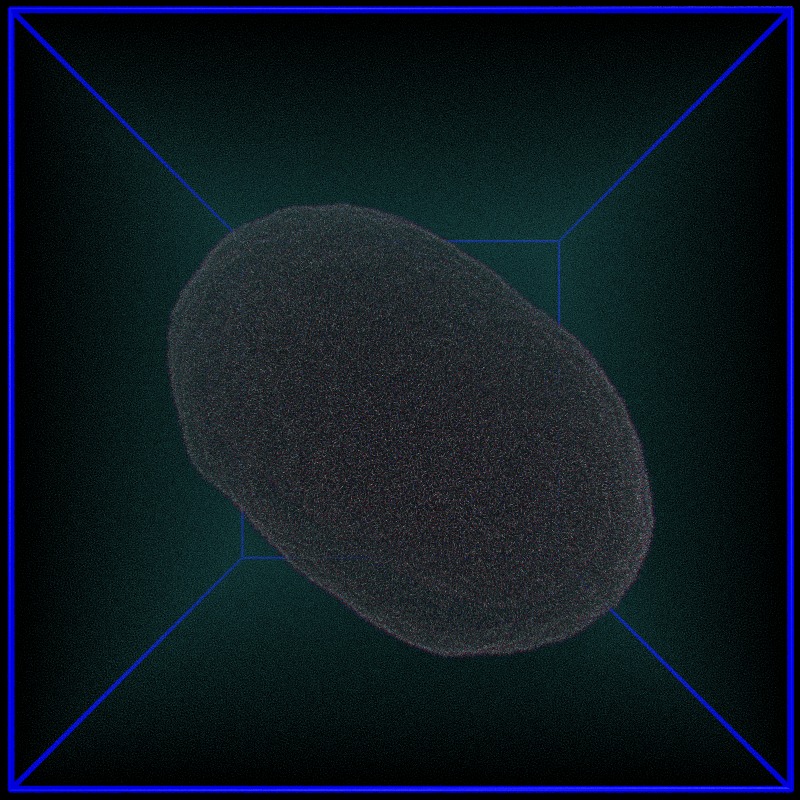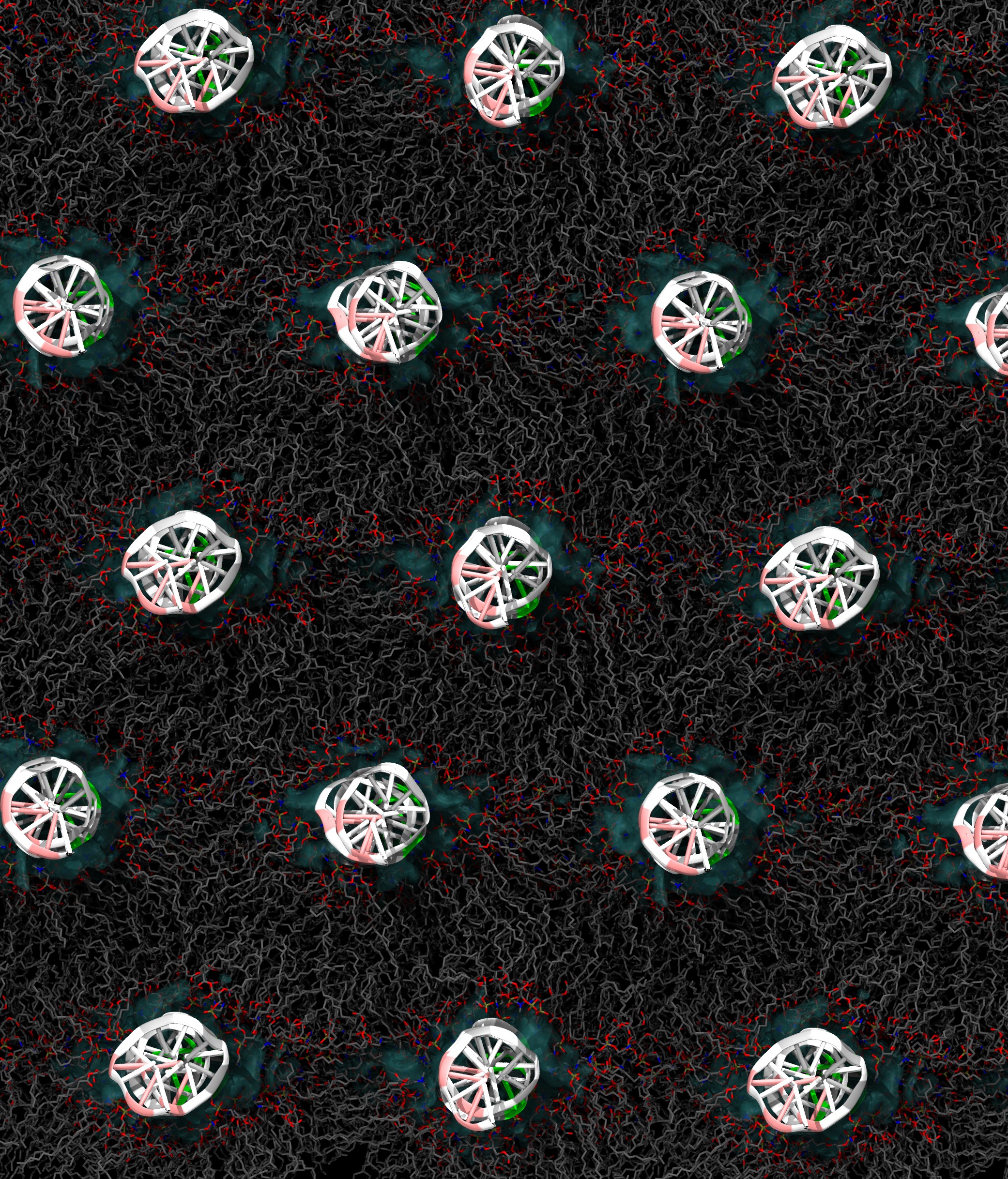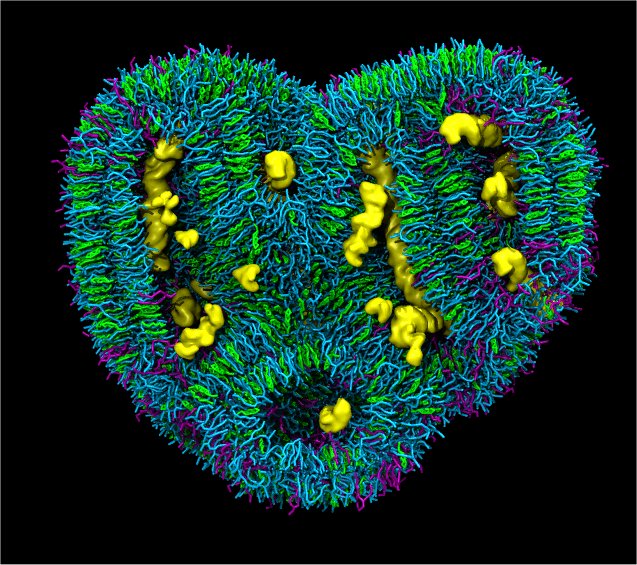DDS carrier/
Lipid nanoparticlesMolecular Simulation
Vesicles
Phospholipid molecules form a spherically closed bilayer, i.e., a vesicle or a liposome among large variety of aggregation states in the solution. Such vesicles are widely used as important model systems for biological cells. They are also used for drug delivery as another application. We focus on understanding the structural needs for the formation of such supramolecular containers and other assemblies of varied aggregate curvature from lipids (cationic, anionic, and Zwitterionic). Research is focused into two major sub-groups: 1) Coarse-grained (CG) modeling of lipids interactions and 2) an investigation of vesicle formation. We address the mechanism of vesicle formation, vesicle to vesicle interaction and free energy analysis of vesicle-to-bicelle transformation using CG simulation.
 |
| 100nm-sized vesicle were genrated during a 2μs-CG-MD simulation starting from a random lipid aggregate. The system consisted of more than 14 Million CG particles. This size of the vesicle corresponds to typical size of DDS carrier. |
Lipoplex
Our interest also lies to elucidate lipoplex features, such as the process of self-assembly and membrane evolution, mesoscopic structure, and defects. Cationic lipids (CL) with anionic nucleic acid (DNA) complexes are known as “lipoplexes” which have been discovered as very promising delivery vectors of DNA in different clinical phases. Our initial efforts are to develop a good CG model of lipids-nucleic acids interactions which may lead to give better understanding of self-assembly and defects of lipoplexes and this information could be used in a task-specific manner for designing them for efficient gene delivery.
 |
 |
| DNA-DOPE-DOTAP complex simulated in AA-MD | DNA-DOPC-DOTAP complex simulated in the CG level with the SPICA force field |
Lipid nanoparticles
Lipid-based nanoparticles (LNPs) are a new generation nucleic acid (DNA/RNA) delivery system due to their unique properties, such as high drug loading and releasing efficiencies, and low toxicity. Subsequently, we have also moved on to extend our force field to explain atomic level insight into LNPs to design them as robust Nano-carriers. Studies are performed using CG-MD simulations which could provide atomic level description of such complex chemical system and aid deciphering their structure, which are sometimes beyond the scope of existing experimental methods.
 |
| A snapshot of LNP system simulated by CG-MD with the SPICA force field. DNA: yellow, POPC: purple, cationic lipid: cyan, cholesterol: green. |


